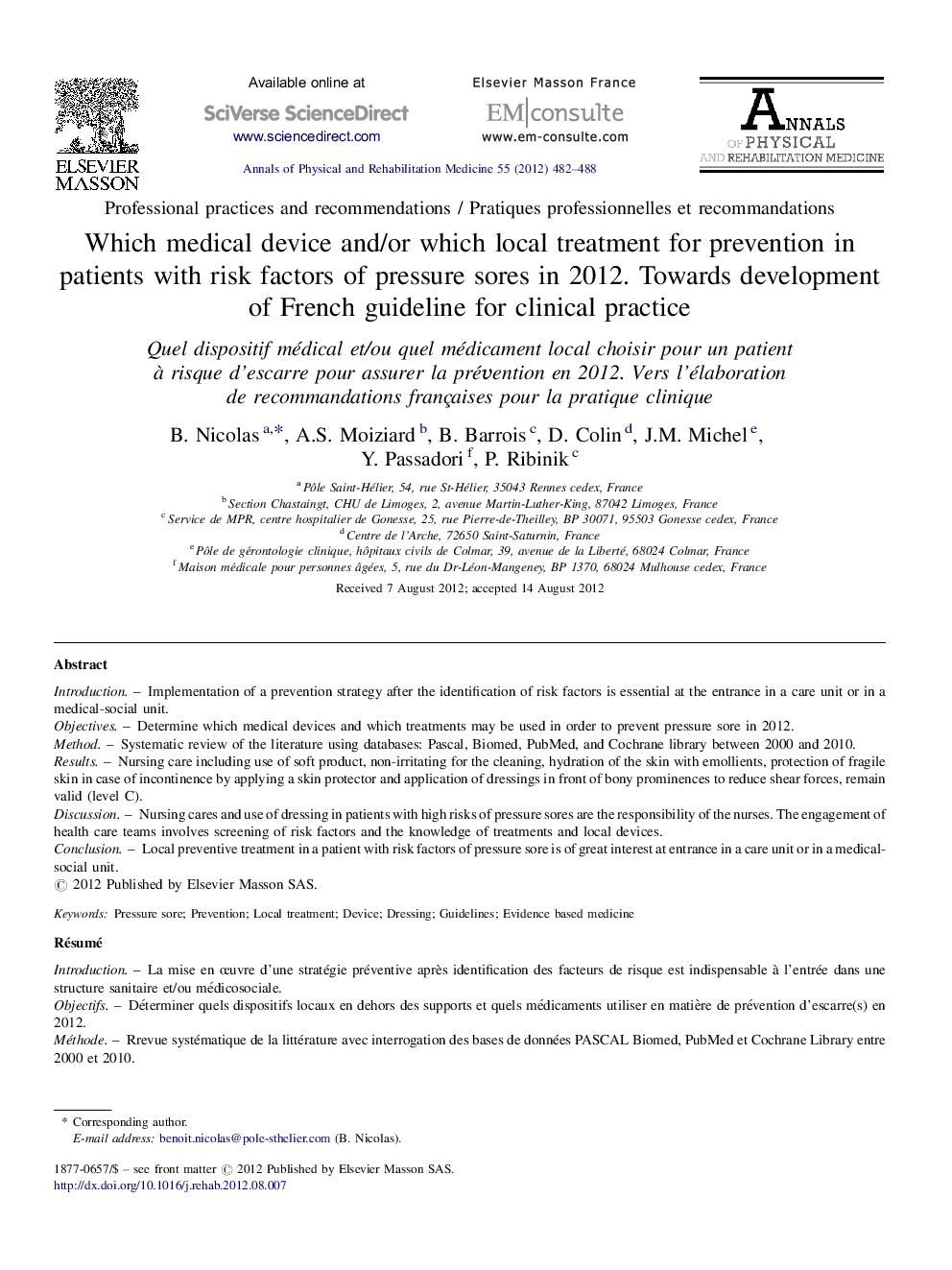| Article ID | Journal | Published Year | Pages | File Type |
|---|---|---|---|---|
| 4041054 | Annals of Physical and Rehabilitation Medicine | 2012 | 7 Pages |
IntroductionImplementation of a prevention strategy after the identification of risk factors is essential at the entrance in a care unit or in a medical-social unit.ObjectivesDetermine which medical devices and which treatments may be used in order to prevent pressure sore in 2012.MethodSystematic review of the literature using databases: Pascal, Biomed, PubMed, and Cochrane library between 2000 and 2010.ResultsNursing care including use of soft product, non-irritating for the cleaning, hydration of the skin with emollients, protection of fragile skin in case of incontinence by applying a skin protector and application of dressings in front of bony prominences to reduce shear forces, remain valid (level C).DiscussionNursing cares and use of dressing in patients with high risks of pressure sores are the responsibility of the nurses. The engagement of health care teams involves screening of risk factors and the knowledge of treatments and local devices.ConclusionLocal preventive treatment in a patient with risk factors of pressure sore is of great interest at entrance in a care unit or in a medical-social unit.
RésuméIntroductionLa mise en œuvre d’une stratégie préventive après identification des facteurs de risque est indispensable à l’entrée dans une structure sanitaire et/ou médicosociale.ObjectifsDéterminer quels dispositifs locaux en dehors des supports et quels médicaments utiliser en matière de prévention d’escarre(s) en 2012.MéthodeRrevue systématique de la littérature avec interrogation des bases de données PASCAL Biomed, PubMed et Cochrane Library entre 2000 et 2010.RésultatsLes soins de nursing incluant l’utilisation de produits doux, non irritants pour le lavage, l’hydratation de la peau avec des émollients, la protection des peaux fragilisées par l’incontinence par application d’un protecteur cutané et l’application de pansements en regard des proéminences osseuses pour réduire les forces de cisaillement restent d’actualité (Grade C).DiscussionLes soins de nursing et l’utilisation de pansements chez les patients à risque d’escarre sont du ressort du rôle propre infirmier. La mobilisation des équipes soignantes passe par le dépistage des facteurs de risque et par la connaissance des médicaments et dispositifs locaux.ConclusionIl y a un intérêt à la mise en œuvre du traitement préventif local chez un patient à risque d’escarre dès l’admission en milieu hospitalier et/ou médicosocial (Grade C).
